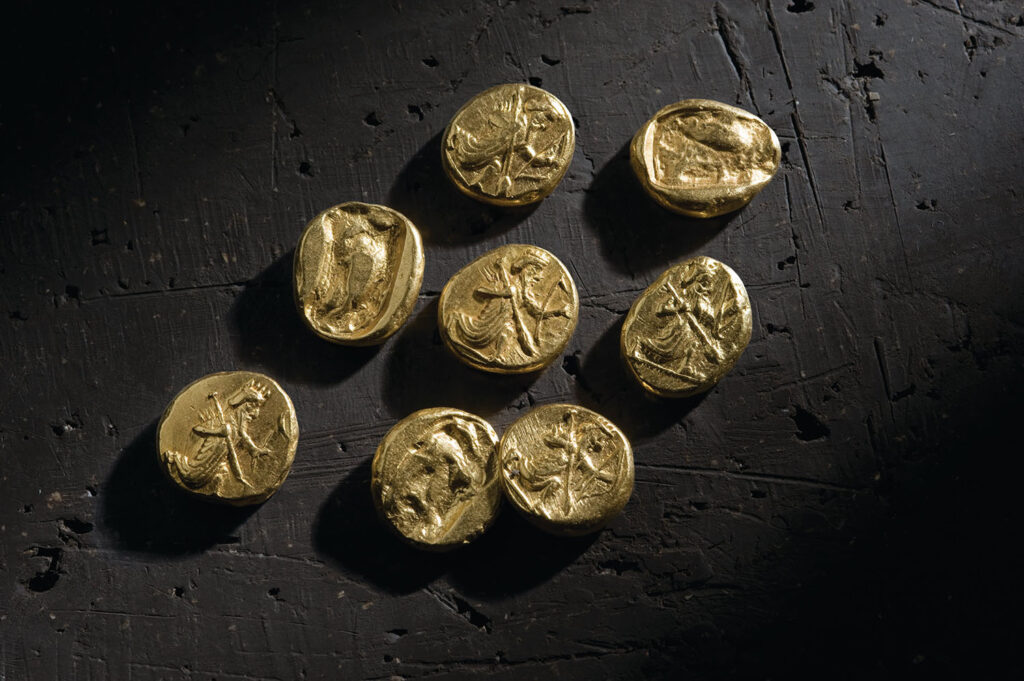Archaeologists in Luxembourg have made a remarkable discovery of 141 Roman gold coins, or solidi, dating back to the late 4th century CE. Unearthed in Holzthum village in northern Luxembourg, this extraordinary treasure was found during excavations conducted over several years by the National Institute for Archaeological Research (INRA).
Struck between 364 and 408 CE, the coins feature portraits of nine Roman emperors, including the rare solidi of Emperor Eugenius, who reigned for only two tumultuous years (392–394 CE). “This is a major archaeological discovery,” announced INRA researchers, “as it is extremely rare to be able to study an entire ancient monetary deposit in its archaeological context.”
The hoard, valued at approximately €308,600, was discovered near the remnants of a late Roman fortified tower, which was used for military observation. Alongside the coins, archaeologists found graves and other artifacts that provide insights into the Roman Empire’s frontier defenses in the region of Gallia Belgica, which includes modern-day Luxembourg.
The coins were first identified in 2019 when amateur archaeologists found a single gold coin in a nearby field. Recognising its importance, they alerted authorities, prompting professional excavations starting in 2020. Over four years, archaeologists carefully unearthed the hoard, working with the Luxembourg Army’s Bomb Disposal Service due to the presence of World War II munitions on the site.
The solidi, each weighing approximately 0.16 ounces (4.5 grams), were introduced in the fourth century as a stable currency. Their exceptional condition and historical value make them particularly significant, reflecting the geopolitical and cultural shifts in the late Roman Empire, including the growing influence of Germanic groups like the Franks.
Under Luxembourg’s cultural heritage laws, the landowner has been compensated for the discovery. The coins and associated artifacts have undergone detailed conservation and study, with INRA planning to publish the findings in a scientific journal. Discussions about where the hoard will be displayed are ongoing, ensuring that this unique treasure is preserved for future generations.
Source: Archaeology Magazine, Institut National de Recherches Archéologiques (INRA)

